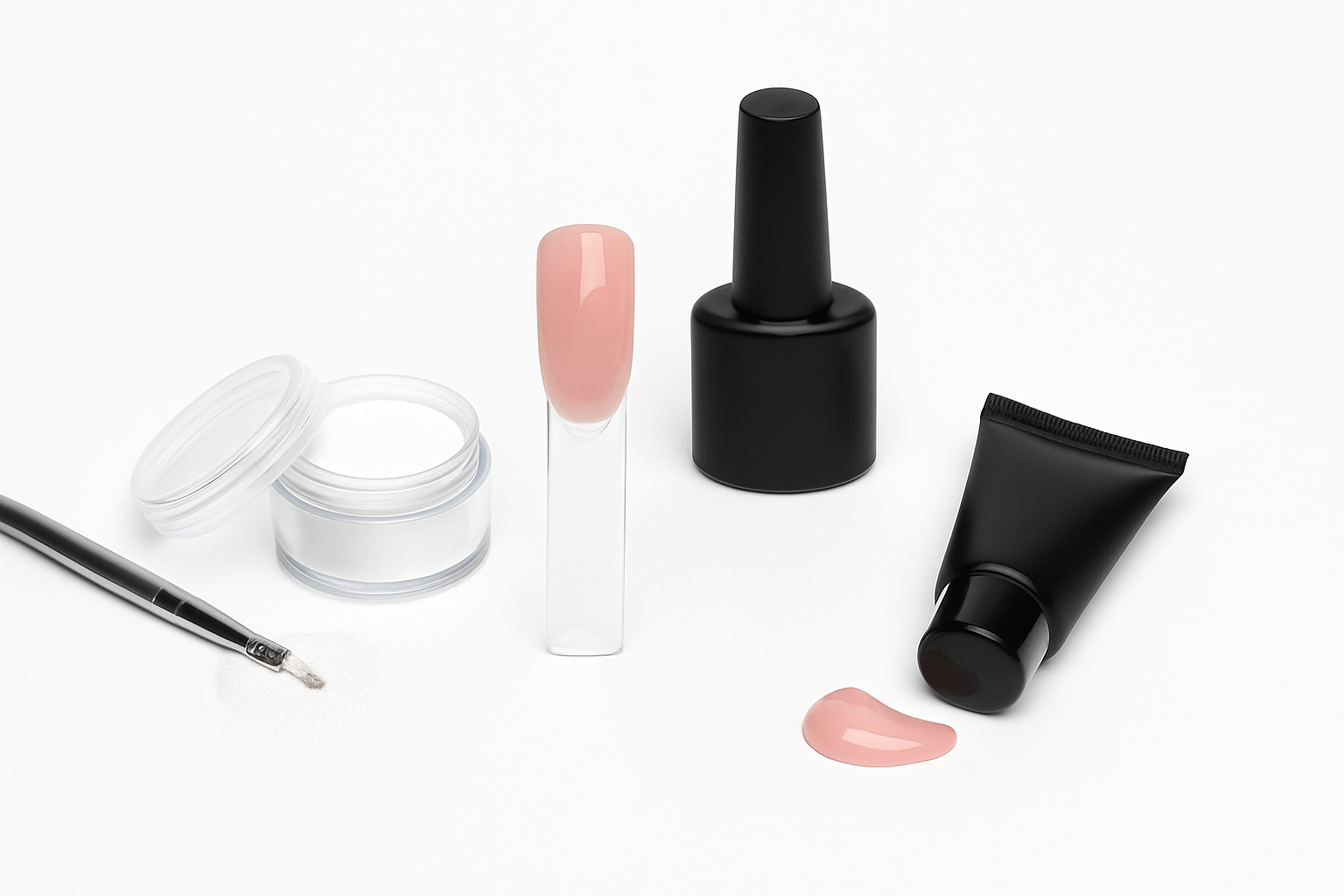Introduction
Nail enhancements have evolved significantly over the years, offering clients a wide range of options to achieve long, durable, and stylish nails. Among the most popular choices are gel nails, acrylic nails, and the relatively newer polygel nails. Each method has its own advantages, drawbacks, and ideal use cases depending on your lifestyle, budget, and aesthetic preference. In this article, we explore the key differences between these three nail systems to help you make an informed decision.
1. What Are Acrylic Nails?
Definition:
Acrylic nails are created using a liquid monomer and a powder polymer that form a hard protective layer over your natural nails when exposed to air.
Application Process:
The technician dips a brush in the liquid monomer and then into the acrylic powder.
The resulting bead is applied to the nail and shaped as desired.
It hardens within minutes without the need for UV or LED lamps.
Pros:
Very strong and durable
Ideal for long extensions
Affordable and widely available
Cons:
Strong odor during application
Requires frequent fills (every 2-3 weeks)
Can damage natural nails if removed improperly
2. What Are Gel Nails?
Definition:
Gel nails are created using a gel-based formula that is cured under a UV or LED lamp to harden.
Application Process:
A base coat is applied first, followed by builder gel or gel polish.
Each layer is cured under a lamp for about 30-60 seconds.
Topcoat is added and sealed for a glossy finish.
Pros:
Natural and glossy appearance
Flexible and less likely to crack
Odorless during application
Cons:
Requires a UV/LED lamp
Less strong than acrylics
More expensive than acrylics
Needs professional removal to prevent nail damage
3. What Is Polygel?
Definition:
Polygel is a hybrid formula combining the best features of both gel and acrylic systems. It comes in a thick paste and is molded using a special slip solution.
Application Process:
Applied using a brush and slip solution, usually with dual forms or nail tips.
Cured under a UV/LED lamp.
Filed and shaped after curing.
Pros:
Lightweight yet strong
No strong odor
More control during application
Less dust and mess than acrylics
Cons:
Requires curing with UV/LED lamp
May take longer for beginners to apply
Slightly more expensive
4. Which One Should You Choose?
Acrylic:
Best for those who want very strong, long-lasting nails on a budget and don’t mind frequent fills or strong odors.
Gel:
Perfect if you prefer a more natural and flexible feel with a high-gloss finish and can maintain proper care and removal.
Polygel:
Ideal for people seeking the durability of acrylic and the flexibility of gel. It’s also a great choice for nail techs looking for better control and less mess.
5. Longevity and Maintenance
| System | Longevity | Maintenance |
|---|---|---|
| Acrylic | 2–3 weeks | Fills required |
| Gel | 2–3 weeks | May chip earlier |
| Polygel | 3–4 weeks | Less frequent fills |
6. Health & Safety Considerations
Always ensure:
Application is done by a trained professional.
Proper removal to prevent nail damage.
Tools and products are sanitized and high-quality.
Avoid over-filing or rough buffing of natural nails.
Conclusion
Choosing between gel, acrylic, and polygel nails ultimately depends on your personal needs and preferences. If strength and affordability are your top concerns, acrylic might be the best. If you want a more natural look, gel nails are for you. But if you want the best of both worlds—flexibility, strength, and less odor—then polygel is a smart and modern choice. Always consult with your nail technician to determine which method suits your nails and lifestyle best.

